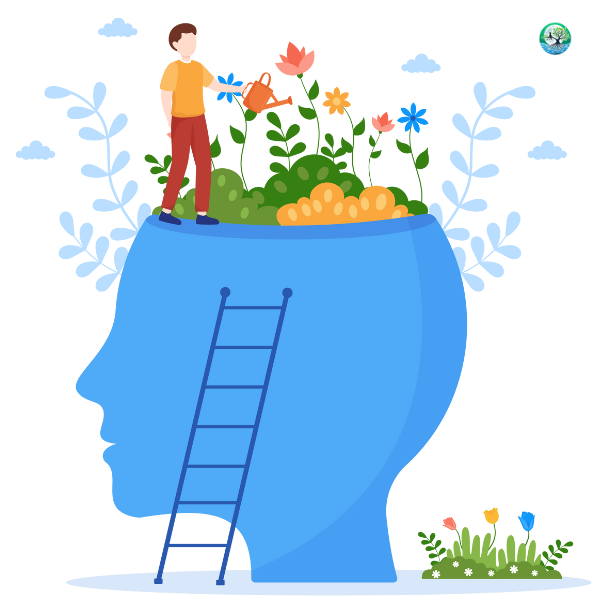
Dr Sathiya Ganesan’s
Mindful Kids. Calm Minds. Brighter Futures
Helping Young Minds Breathe, Focus, and Heal With Presence and Calm
In today’s fast-paced, overstimulating world, many children struggle with anxiety, inattention, and emotional overwhelm. They may feel scattered, restless, or disconnected, not knowing how to slow down, reflect, or self-soothe.
Mindfulness-Based Therapy is a gentle, evidence-backed approach that teaches children to focus on the present moment, notice their thoughts and feelings, and respond with calm awareness instead of impulsive reaction.
Dr. Sathiya Ganesan, Consultant in Child and Adolescent Psychiatry, integrates mindfulness techniques into therapy sessions to help young people develop emotional resilience, focus, and inner peace.
Understanding Mindfulness-Based Therapy
Training the Mind to Pause, Reflect, and Respond With Balance

Mindfulness involves purposefully paying attention to the present moment — without judgment. When integrated into therapy, mindfulness teaches children how to notice their thoughts, feelings, and bodily sensations with kindness and curiosity.
Mindfulness-Based Therapy is especially helpful for children with:
- Anxiety and excessive worry
- Attention Deficit Hyperactivity Disorder (ADHD)
- Emotional regulation difficulties
- Anger, impulsivity, or restlessness
- Sleep disturbances or stress-related complaints
- Depression or self-critical thinking
- Autism Spectrum Disorder and sensory sensitivity
Mindfulness helps children become more aware, focused, and emotionally grounded — tools they can use for a lifetime.
Signs a Child May Benefit From Mindfulness-Based Therapy
- Frequent worry or inability to calm down
- Trouble staying focused or sitting still
- Intense reactions to minor stressors
- Difficulty sleeping due to racing thoughts
- Irritability, emotional outbursts, or low frustration tolerance
- Negative self-talk or perfectionism
- Avoidance of challenging situations
Mindfulness-based practices allow children to observe rather than react, building awareness and control.
What Happens in Mindfulness-Based Therapy?
Mindfulness is taught through engaging, age-appropriate activities, such as:
- Breathing exercises and body scans
- Guided imagery and grounding techniques
- Nature-based observation and “noticing” games
- Mindful movement (walking, yoga, stretching)
- Emotion tracking through journaling or drawing
- Sensory awareness (taste, sound, texture focus)
- Using mindfulness bells or calming visual tools
Sessions are gentle, exploratory, and adapted to each child’s temperament and developmental stage.
Benefits of Mindfulness for Children
- Improves attention span and cognitive flexibility
- Reduces anxiety and emotional reactivity
- Encourages self-compassion and inner calm
- Enhances problem-solving and reflective thinking
- Helps manage impulsivity and behavior
- Strengthens emotional regulation and stress recovery
With regular practice, mindfulness gives children a powerful skill: the ability to pause before reacting.
Integrating Mindfulness With Holistic Psychiatric Care
Dr. Ganesan uses Mindfulness-Based Therapy in combination with:
- CBT or DBT (for emotional processing)
- Play therapy and expressive arts
- Parent training and behavioral coaching
- Psychiatric care for mood or attention disorders
- School-based emotional wellness planning
This ensures a well-rounded therapeutic experience that nurtures both mind and body..
Support for Parents and Educators
Parents are guided on how to:
- Encourage mindful moments at home (e.g., bedtime breathing, mindful eating)
- Model emotional regulation through calm presence
- Use sensory breaks and relaxation cues during transitions
- Build routines that include screen-free, present-moment time
Teachers can also benefit from classroom-friendly mindfulness tools to support children’s focus and behavior.
Online Mindfulness Coaching and Support
Dr. Sathiya Ganesan offers virtual mindfulness sessions and parent coaching to:
- Support children during school transitions or anxiety spikes
- Reinforce calm routines and breathing techniques
- Share tools for bedtime, exams, or high-stress moments
- Create customized mindfulness kits for home or travel

Why Choose Mindfulness-Based Therapy With Dr. Sathiya Ganesan?
With a holistic, child-centered approach, Dr. Sathiya Ganesan helps children use mindfulness not just as a technique, but as a way of life. His therapy model is:
- Gentle, practical, and emotionally attuned
- Rooted in both science and compassion
- Designed for real-world application in home, school, and social life
- Tailored to each child’s emotional and developmental needs
Mindfulness becomes a bridge between inner calm and outer resilience.
Help Your Child Discover Peace in the Present Moment
If your child is anxious, scattered, or emotionally overwhelmed, Mindfulness-Based Therapy can help them find calm, clarity, and confidence — one breath at a time. Contact Dr. Sathiya Ganesan today to begin a therapy journey that nurtures attention, balance, and emotional wellness.
Is mindfulness safe and effective for children?
Yes. When taught appropriately, mindfulness improves attention, emotion regulation, and stress resilience in children of all ages.
Does mindfulness replace therapy or medication?
No. It complements therapy and can reduce the need for medication over time in some cases, but it works best as part of an integrated care plan.
What age group can benefit from mindfulness?
Children as young as 4–5 can learn mindfulness in playful ways. Teens benefit from deeper breathing, self-awareness, and guided meditation tools.
Can parents learn mindfulness too?
Absolutely. Parent involvement strengthens the child’s practice. Dr. Ganesan offers coaching and home-based mindfulness tools.
How long does it take to see results?
Even short practices done consistently can reduce anxiety, improve focus, and build regulation in a few weeks.


